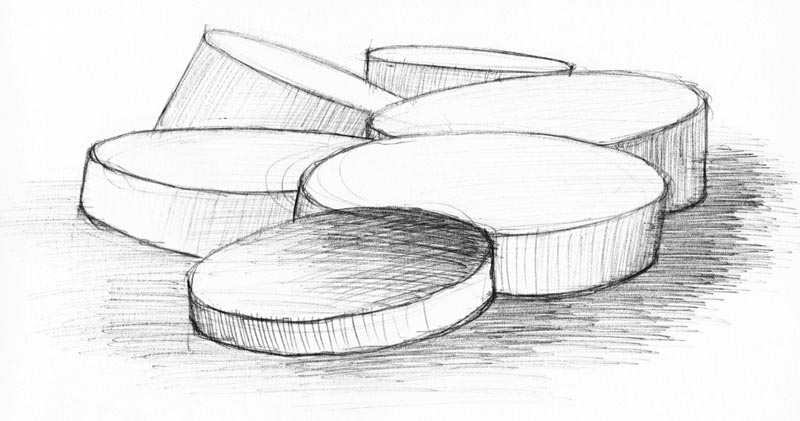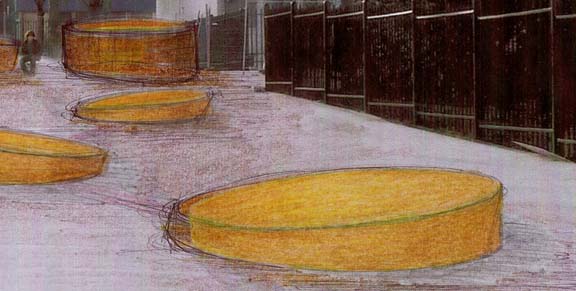Sound Installation
Vibrating Cylinders (Brest, Fr.)

The work is a landscape, a climate more than an object.
It is a space to share, to live in a "public" or intimate way,
flexible and open enough not to require operation.

The work is visually very present, but it is while approaching that it reveals its meaning:
the low vibration surrounds us, we sense an animated matter more than sound.
Each cylinder portion has its own resonant frequency.
What is seen is between sound and vibration: the report can be considered by listening of course,
but also felt by the body, touching, sitting, lying down on it.
The cylinders seem to float in and out of the ground. They seem unstable and light because they sound.
Completing the vibration of the cylinders,
4 speakers placed at the top of masts create a "bubble" enveloping sound, composed in counterpoint.
Musical elements come from collectages, meetings with the neighborhood and its inhabitants, including the school.
The work is in frequencies outside those already employed in the existing environment, that is to say, in the extreme treble / subwoofer.
Installed in a permanent manner, the work can be heard every day from 6'30am to 22pm. Tram stop Dupuy de Lome, Brest (Fr). > map
a command of the Programme Artistique du Tramway de Brest Métropole Océane.
Arter - Paris.
Realisation Société A2C.
with the help of Christophe Havard, Xavier Jacolot et Philippe Cam.







